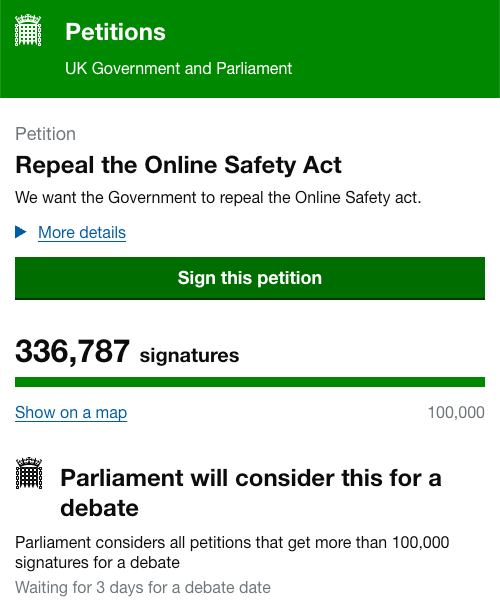Navigating the 'Invisible Hand': Protecting Your Organization from Insider Threats in the Hybrid Era

In today's interconnected world, the cybersecurity conversation often centers on external adversaries – hackers, ransomware gangs, and nation-state attackers. However, a significant and often more insidious threat lurks within: the Insider Threat. This "invisible hand" can be a current or former employee, contractor, or business partner who, having authorized access to your organization's network, systems, or data, misuses it to negatively affect confidentiality, integrity, or availability.
Insider threats pose a unique challenge because these individuals are "trusted persons" whose actions often escape the same level of scrutiny as external threats. They may even possess the credentials or security knowledge to bypass existing defenses. And in the new reality of remote and hybrid work, this challenge is growing exponentially.

The Evolving Landscape of Insider Threats
Insider threats are not monolithic; they manifest in various forms based on intent:
- Unintentional Insiders: These employees do not intend to cause harm but may do so through negligence, a lack of security awareness, or failing to follow security protocols. Examples include negligently protecting passwords, lending credentials, or ignoring suspicious activities.
- Negligent Insiders: These individuals are aware their actions are security violations but "take a chance" or "cut corners". This could involve a lax approach to policies, such as removing proprietary information to work from home.
- Malicious Insiders: These employees intentionally act to damage the organization. They can be self-motivated, exploiting access gained during employment, or recruited by external entities, including foreign intelligence services.
Motivations for malicious insiders often follow the FBI's "CRIME" model: Compromise (coercion), Revenge, Ideology, Money, or Ego. Most employees don't start with malicious intent; rather, a significant life change often triggers a series of actions that lead to them becoming a threat, a phenomenon known as the "pathway to becoming a threat". Along this pathway, observable behaviors often emerge, providing critical opportunities for detection.
While not the most numerous security incidents (approximately 9% involve malicious insider actors), insider threats are typically the most costly and damaging, with average costs around €360,000 per incident and some exceeding €1 billion. The threat is also becoming more sophisticated: in 2024, 40% of FAMOUS CHOLLIMA incidents were insider threat operations, leveraging generative AI for deception.

The Hybrid Work Dilemma: Blurred Lines and Heightened Risk
The widespread adoption of remote and hybrid work models has introduced unprecedented cybersecurity risks. In 2025, 20% of organizations reported security breaches caused by remote workers. This shift means employees are working from diverse locations using various devices, often on unsecured networks, leading to vulnerabilities like BYOD risks and weak access control.
The blurring of lines between professional and personal life, and public and private spaces, is a key concern. Employees might use work devices for personal tasks, or personal devices for work, and might do so in common household spaces where sensitive information could be inadvertently exposed to family members or "bystanders". This creates a significant challenge for firms aiming to protect proprietary and personally identifiable information (PII).
A particularly chilling example of a sophisticated insider threat in this environment is the reported practice of North Korea embedding skilled IT workers within companies globally, including Fortune 500 firms. These operatives use their legitimate access as employees, along with the company's network and trusted IP addresses, as "bastion hosts" for illicit "side gigs". These side gigs, often secured via fake profiles on freelance platforms and facilitated by external networks using tools like KVM switches and virtual webcams to spoof identity and location, generate revenue directly for the North Korean regime. This demonstrates how trusted access, even in a seemingly normal remote work setting, can be exploited for significant economic espionage.
Navigating the Monitoring Tightrope: Detection and Mitigation
Defending against insider threats, especially in hybrid environments, requires a multi-layered approach that balances robust security with maintaining employee trust and privacy.
1. Behavioral Indicators: Your Best Sensors Perhaps the most crucial aspect of detection lies with your own workforce. Peers, colleagues, and managers are often the first to notice concerning behaviors. In 85% of insider incidents in banking and finance, someone else knew something was wrong beforehand but did not report it. This highlights the need for a protective culture where employees feel safe and obligated to report concerns without fear of penalty.
Key behavioral signs to look for include:
- Unusual or late working hours consistently.
- Being disengaged in team chats or meetings.
- Sudden financial difficulties or unexplained excessive lifestyle.
- A pattern of using corporate equipment for extensive "side gigs" or non-work activities.
- Repeatedly violating company policies.
- Displaying disgruntled behavior or expressing feelings of being wronged.
- Developing sudden close foreign contacts or travel to conflict zones.
2. Technical Indicators and Tools While people are vital sensors, technology plays a critical role in corroborating suspicions and detecting hidden activities. Technical indicators include:
- Unusual login times or locations.
- Attempts to access data outside of normal work routines or systems not associated with their role.
- Unusually large numbers of file manipulations, data downloads, or transfers.
- Old accounts becoming active again.
- Heavy browser use, juggling multiple virtual desktop infrastructures (VDIs) or email accounts.
- Attempts to bypass multi-factor authentication (MFA).
Organizations often employ User Activity Monitoring (UAM) and User Behavior Analytics (UBA) tools to detect these anomalies. UAM tools can involve keystroke logging or screen recording, while UBA uses AI or machine learning to spot deviations from normal activity patterns. However, these tools generate vast amounts of data, requiring skilled analysts to identify true threats amid the noise. It's also crucial to be transparent with employees about monitoring, as legal requirements often mandate notice.
3. The Challenge of Trust and Privacy Employee monitoring, particularly intrusive methods, can generate deep skepticism and even hostility among employees. Many technical professionals, for instance, express concern about feeling micromanaged, privacy intrusions (especially when using work devices for personal tasks), and a perceived lack of trust from their employers. This tension highlights a critical disconnect: while security experts see monitoring as a detection tool, many employees view it as invasive and demoralizing.
Federal laws like the Electronic Communications Privacy Act (ECPA) of 1986 have limited protections, allowing monitoring for "business purpose" or with "consent". However, some states (e.g., California, New York, Delaware, Connecticut) have enacted stronger privacy protections, including requirements for employers to provide notice of electronic monitoring. Cases like Stengart v. Loving Care Agency, Inc. also affirm that employees may retain a right to privacy for personal communications on work devices, especially concerning attorney-client privilege. Employee monitoring can also interfere with rights related to union activities, with the NLRB outlining frameworks to prevent such interference.
4. Building a Proactive and Trust-Based Culture The path forward demands a balanced, holistic approach that prioritizes both security and trust. Key strategies include:
- Establish a Strong Security Culture: Security is everyone's responsibility. Foster a culture where employees are trained to understand threats, recognize indicators, and feel safe to report suspicious activities through robust, confidential, and anonymous reporting mechanisms. Emphasize that it's better to report something that turns out to be nothing than to miss a serious issue.
- Transparency and Fairness: Communicate transparently about security policies, monitoring practices, and incident response procedures. Ensure fairness and consistency in application, adhering to corporate values and involving employee representatives (like unions).
- Comprehensive Training: Implement mandatory security awareness training for all employees, including executives, covering various insider threat types, cybercrime, phishing, and behavioral indicators. Regularly update content to reflect emerging threats.
- Least Privilege and Access Controls: Grant employees only the minimum access necessary for their job functions (least privilege principle). Implement strict password and account management policies, multi-factor authentication (MFA), and regularly review access rights.
- Continuous Screening and Offboarding: Perform structured pre-employment checks, and where legally permissible, implement continuous (or "infinity") screening after hiring, as most occupational fraudsters are first-time offenders with clean histories. Develop comprehensive employee termination procedures to immediately revoke all access upon departure, as ex-employees can pose significant risks.
- Data Protection and Incident Response: Identify and prioritize critical assets for protection. Implement secure backup and recovery processes, and ensure robust internal investigation and incident response procedures are in place, agreed upon with all stakeholders.
Conclusion
The insider threat is a persistent and evolving challenge, particularly amplified by the shift to hybrid work. Organizations must acknowledge that it's not merely a technical problem but a complex interplay of human behavior, technology, and organizational culture. By investing in proactive strategies that encompass both sophisticated technical monitoring and, critically, a transparent, trust-based culture that encourages reporting and accountability, organizations can effectively protect their most valuable assets—their data, systems, and most importantly, the trust of their own people. Ignoring this "invisible hand" is a risk no organization can afford to take.







